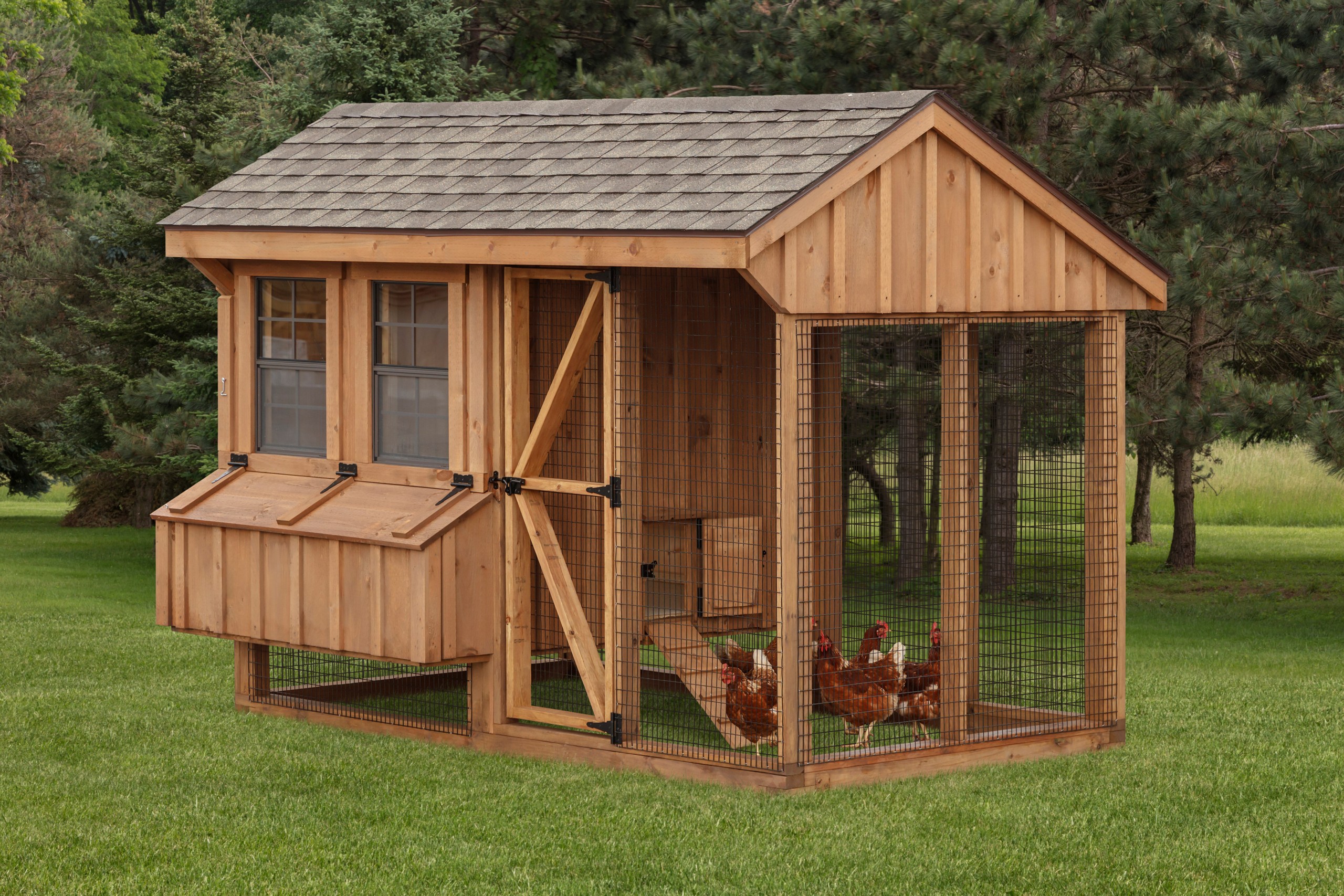Chicken Coop Kits: A Beginner's Guide

What are Chicken Coop Kits?
Chicken coop kits are pre-made coops that come with all the necessary materials and instructions for assembly. They are designed to make the process of building a chicken coop easier and more efficient. These kits come in a variety of sizes and styles, so you can find one that fits your needs and preferences.
Types of Chicken Coop Kits
There are several types of chicken coop kits available on the market. The most common types include:
Traditional Coop Kits
Traditional coop kits are the most basic type of kit. They usually come with just the materials needed to build a simple coop, without any additional features or accessories.
Portable Coop Kits
Portable coop kits are designed to be easily moved around your yard. They usually come with wheels or handles to make transportation easier.
Luxury Coop Kits
Luxury coop kits are designed for those who want to provide their chickens with a more comfortable and stylish living space. These kits often come with features such as nesting boxes, run areas, and even windows.
How to Choose the Right Chicken Coop Kit
Choosing the right chicken coop kit can be a challenge, especially if you are unfamiliar with the different types and styles available. Here are some factors to consider when choosing a kit:
- Size: Make sure the kit you choose is large enough to accommodate the number of chickens you plan to keep.
- Style: Choose a style that fits your needs and preferences.
- Price: Consider your budget when choosing a kit.
- Features: Decide which features are important to you, such as nesting boxes or a run area.
Pros and Cons of Chicken Coop Kits
Pros
- Easy to assemble
- Less expensive than hiring a contractor to build a coop from scratch
- Comes with all necessary materials and instructions
- Available in a variety of sizes and styles
Cons
- May not be as sturdy or durable as a custom-built coop
- May not be able to accommodate specific needs or preferences
- May require additional maintenance or repairs over time
- May not be able to hold up to extreme weather conditions
FAQ
Q: How long does it take to assemble a chicken coop kit?
A: The time it takes to assemble a chicken coop kit varies depending on the size and complexity of the kit. Some kits can be assembled in a few hours, while others may take several days. It's best to read the instructions carefully and set aside enough time to complete the project.
Q: Are chicken coop kits easy to clean?
A: Yes, chicken coop kits are designed to be easy to clean. Most kits come with removable nesting boxes and trays that can be easily cleaned and replaced.
Q: Can I customize a chicken coop kit?
A: Yes, you can customize a chicken coop kit to some extent. However, it's important to read the instructions carefully and make sure any modifications you make do not compromise the structural integrity of the coop.
Q: How long will a chicken coop kit last?
A: The lifespan of a chicken coop kit depends on several factors, including the materials used, the climate in your area, and the amount of maintenance it receives. With proper care, a chicken coop kit can last several years.
Conclusion
Chicken coop kits are a great option for those who want to raise chickens but have little or no experience in construction. They are easy to assemble, come in a variety of sizes and styles, and can be less expensive than hiring a contractor to build a coop from scratch. However, they may not be as sturdy or durable as a custom-built coop, and may require additional maintenance or repairs over time. When choosing a chicken coop kit, consider your needs, preferences, and budget, and make sure to read the instructions carefully before starting the assembly process.
